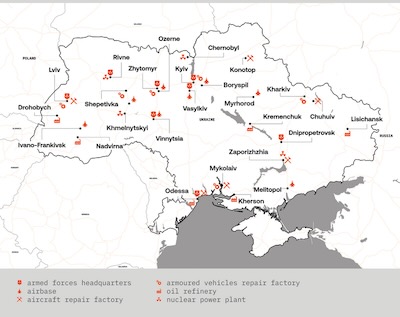Military pressure and threats of war have become key foreign policy tools for Russia.
Russian forces concentrated on the Ukrainian border pose an immediate threat to Ukraine and an ultimatum to the West.
By the second half of February 2022, Russia has created the conditions and capabilities necessary to launch a large-scale military offensive against Ukraine if the Russian leadership so decides.
In autumn 2021 and winter 2022, Russia mobilised 150,000 men on the Ukrainian border, deploying units and capabilities from all its military districts, including the Far East, and all twelve armies. This is the single largest military build-up by Russia in the past 30 years.
Russia’s deployment along the Ukrainian border is the single largest military build-up by Russia in the past 30 years.
In addition to the three motor rifle divisions, one airborne division and one naval infantry brigade permanently deployed in the region, Russia moved more than 60 motor rifle and tank battalions, some ten Iskander missile battalions and more than 30 artillery and rocket artillery battalions to the border with Ukraine. Russia has set up full logistic support for the force groups, bringing in additional command and rear units and forward-deploying munitions in the Ukrainian direction. The contingent is supported by a regionally dominant air force and Russia’s Black Sea Fleet, equipped with Kalibr missiles. Winter 2021-22 saw a significant upswing in the activities of Russian special services and Spetsnaz units against strategically important targets in Ukraine.

Should Russia achieve its goals in Ukraine, political and military pressure on the Baltic states could increase.
Russia deployed some 20,000 troops to Belarus as part of its military preparations. A joint exercise, Soyuznaya Reshimost (Allied Resolve) 2022, was organised to justify, or provide a cover for, deploying forces to the neighbouring country. In addition to manoeuvre units, Iskander missile systems and S-400 anti-aircraft systems were also deployed to Belarus for the first time. Units from three airborne divisions and from all airborne brigades arrived in Belarus. In the future, Russia may continue to maintain a rotating force group on Belarusian territory. This would harm the wider security situation in the Baltic Sea region and for NATO, reducing the preparation time for an attack against the Baltic states.
In our assessment, the Russian armed forces are ready to embark on a full-scale military operation against Ukraine from the second half of February. Once military readiness has been achieved, only a political decision is required to launch the operation. If Russia chooses war, the level of military threat across Europe will rise. Although war in Ukraine would not pose an immediate military threat to Estonia or NATO, Russia’s political and military pressure on the Baltic states could increase in the long term should Russia achieve diplomatic and/or military success on the Ukraine issue. Even if Russia’s leadership can be persuaded to desist from military aggression, Estonia and other Western countries must prepare for increasingly sustained military pressure from Russia – direct threats of war have become an integral part of the foreign policy of Putin’s Russia over the past year.
 Articles by this author
Articles by this author











Stay In Touch
Follow us on social networks
Subscribe to weekly newsletter